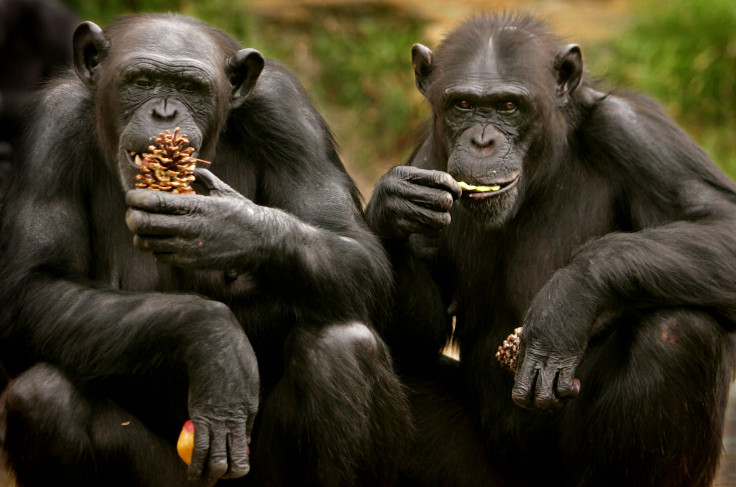Chimpanzees’ Use Of Hand Gestures To ‘Coordinate’ Activities An ‘Important Building Block’ In Evolution Of Language

Scientists have found that chimpanzees, our closest living relatives with whom we share 98 percent of our genes, are able to use hand gestures to achieve shared goals. Humans working with chimps raised in captivity in the U.S. designed experiments in which the primates directed their human handlers toward hidden food using hand motions. Scientists believe the study could provide clues about the basics of language development.
Researchers from Georgia State University’s Language Research Center devised a set of experiments that required collaboration between the humans and the chimpanzees. The results of their study, published in the journal Nature Communications, suggest our understanding of chimpanzee behavior is constantly evolving and gives insight into the power of chimpanzees’ memory and their grasp of gestural language.
“Humans routinely communicate to coordinate their activities, persisting and elaborating signals to pursue goals that cannot be accomplished individually,” the study authors noted. “Communicative persistence is associated with complex cognitive skills such as intentionality, because interactants modify their communication in response to another’s understanding of their meaning.”
The study involved experimenters hiding food in an outdoor area and having the chimps direct a researcher, who did not know the whereabouts of the concealed item, toward the food. Researchers relied on the chimps, directional cues to find the food.
"[This experiment] allows the chimpanzees to communicate information in the manner of their choosing, but also requires them to initiate and to persist in communication," Dr. Charles Menzel, a senior research scientist at the Language Research Center, said in a statement. "Because of the openness of this paradigm, the findings illustrate the high level of intentionality chimpanzees are capable of, including their use of directional gestures. This study adds to our understanding of how well chimpanzees can remember and communicate about their environment."
Researchers noted that previous findings have demonstrated chimps’ flexible use of gestures to communicate, but the current study further shows the animals’ “considerable cognitive abilities.”
"The use of gestures to coordinate joint activities such as finding food may have been an important building block in the evolution of language," Dr. Anna Roberts of the University of Chester, who worked on the study, said in a statement.
The current research builds on our understanding of how chimps communicate. A 2003 study from the Max Planck Institute for Evolutionary Anthropology in Germany highlighted the chimpanzees’ apparent ability to at least partly understand what others do and do not see.
© Copyright IBTimes 2024. All rights reserved.






















